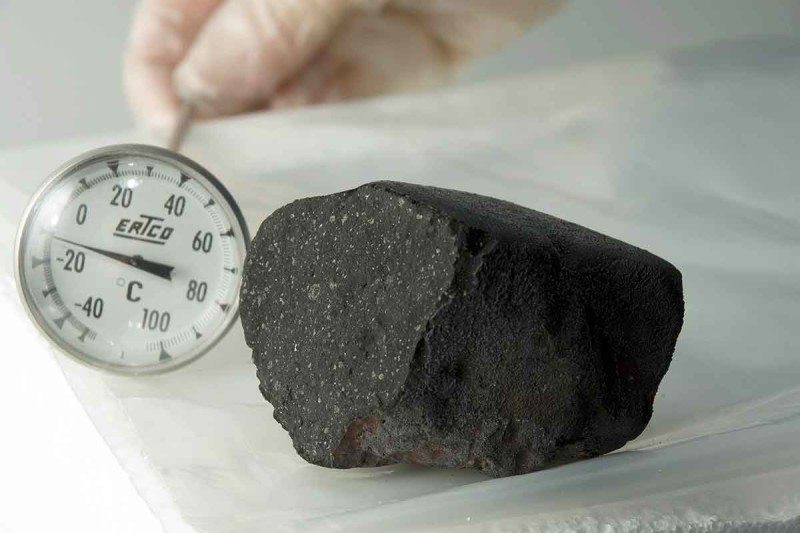A strange meteorite from Canada may be an alien from the Kuiper belt
If so, the meteorite will help scientists learn more about the initial stages of the solar system.

A meteorite that fell in 2000 on the frozen surface of Lake Tagish in Canada A
meteorite that fell in Canada 16 years ago may be the first registered guest of our planet from the Kuiper belt. Most of the meteorites that are found on Earth, come to us from the asteroid belt, located between Mars and Jupiter. The features of the meteorite of Lake Tagish, which fell in this area in 2000, suggest that this celestial body came to us from another area, far more distant from the Earth than the asteroid belt.
Bill Bottke, one of the scientists who investigated this meteorite, claimsthat it was formed at the very beginning of the existence of the solar system. According to him, this meteorite was once part of a larger object in the Kuiper belt, which collapsed under the influence of gravity or other forces, divided into fragments.
Bottke believes that at the dawn of the existence of the Solar System, Jupiter, Saturn, Uranus and Neptune caused strong gravitational disturbances that affected many objects, including those in the Kuiper belt. Some of them, under the influence of the gravity of gas giants, were captured and thrown into the asteroid belt or simply sent into free flight through the system. One of these captured fragments, due to a combination of circumstances, came to Earth.
Kuiper belt and individual objects in it are the subject of close attention of scientists. The belt itself consists mainly of small bodies, presumably the material left after the formation of the solar system. Now the New Horizons interplanetary station is heading toward the 2014 MU69 object in the belt, sending a huge amount of information about Pluto and its satellite to Earth.
“For a short time, the gas giants had a very strong influence on each other, as well as on the comets that surrounded these planets at that time,” says Botke. And as a result, a large number of comets fell from the outer borders of the solar system into its inner regions. Presumably, some D-class asteroids formed in the Kuiper belt. This is a class of asteroids, which includes objects with a very low albedo (0.02-0.05) and a smooth reddish spectrum without clear absorption lines. Such properties are silicates rich in carbon or organic matter, possibly mixed with water ice. They consist, for example, of particles of interplanetary dust, which probably also filled the near-solar protoplanetary disk even before the formation of the planets.
Based on this similarity, it can be assumed that D-asteroids are the most ancient, unmodified bodies of the asteroid belt. It is highly probable that the satellite of Mars Phobos is also a D-class asteroid, an alien from the Kuiper belt.
The antiquity of such asteroids, as well as their fragments, could clarify some of the details of the formation of the solar system. If the Tagish meteorite really flew to Earth from the Kuiper belt, then it is a very valuable object for study. In fact, this meteorite is the same age as the solar system, and its composition can explain the structural features of comets, asteroids and planets of our system. In addition, according to Bottke, the study of D-class meteorite and asteroids can indicate to scientists where so much water came from on Earth. Some scientists believe that water fell on an already formed planet from the outside, but experts do not know where it came from.
Pierre Vernazza of the Marseille Observatory (France) is not surethat the meteorite in question is similar in composition to D-class asteroids. But the scientist agrees that this meteorite is unusual. “Now we have no evidence that this is possible [hit of an object from the Kuiper belt on Earth, approx. Ed.], ”says Vernaza.
But Bottke is sure of this, he believes that a meteorite is a sample of matter that came to us from the very outskirts of the Solar system, where there are objects whose age is almost equal to the age of the Solar system itself, and which can reveal details of its early history.
